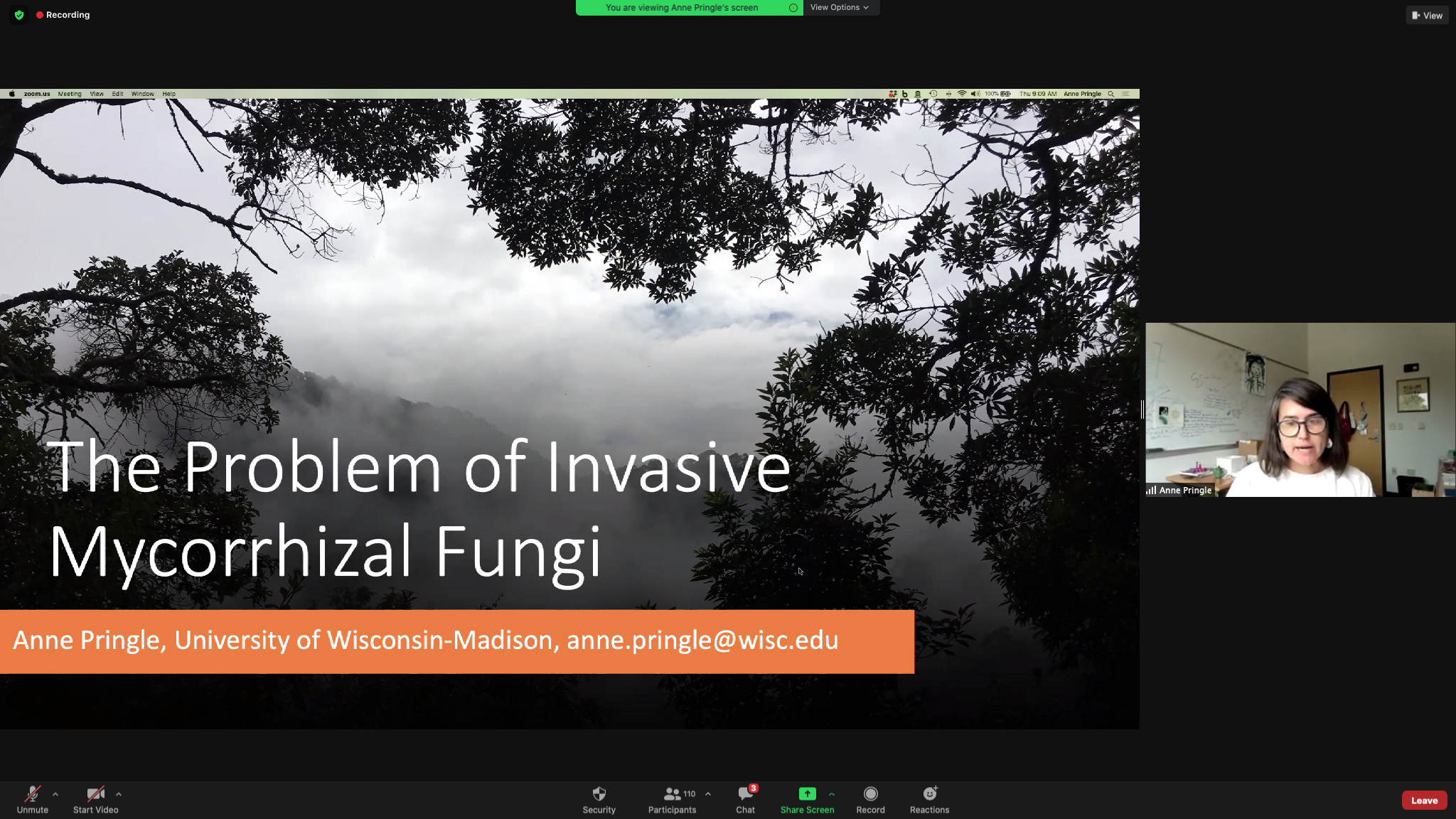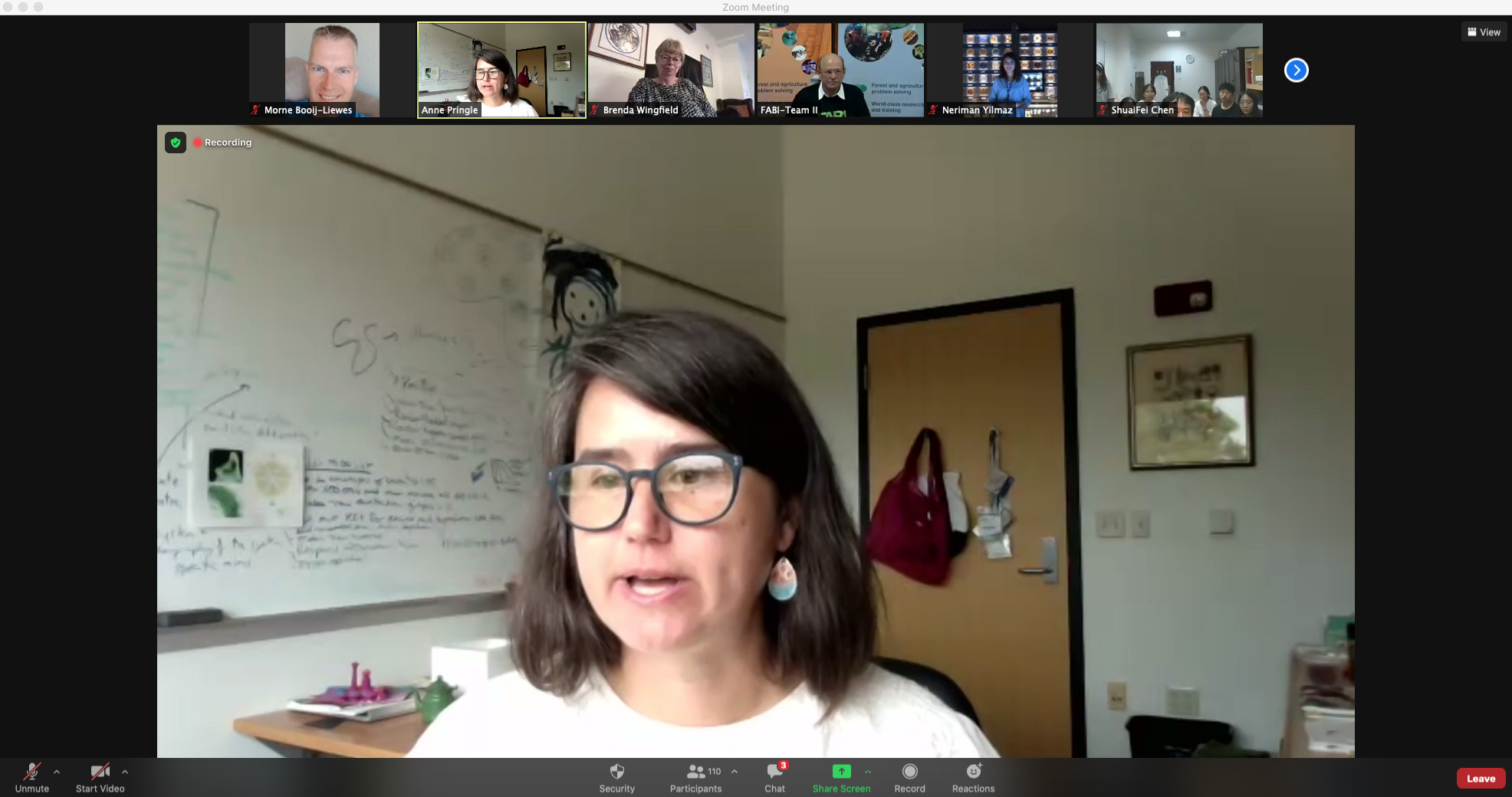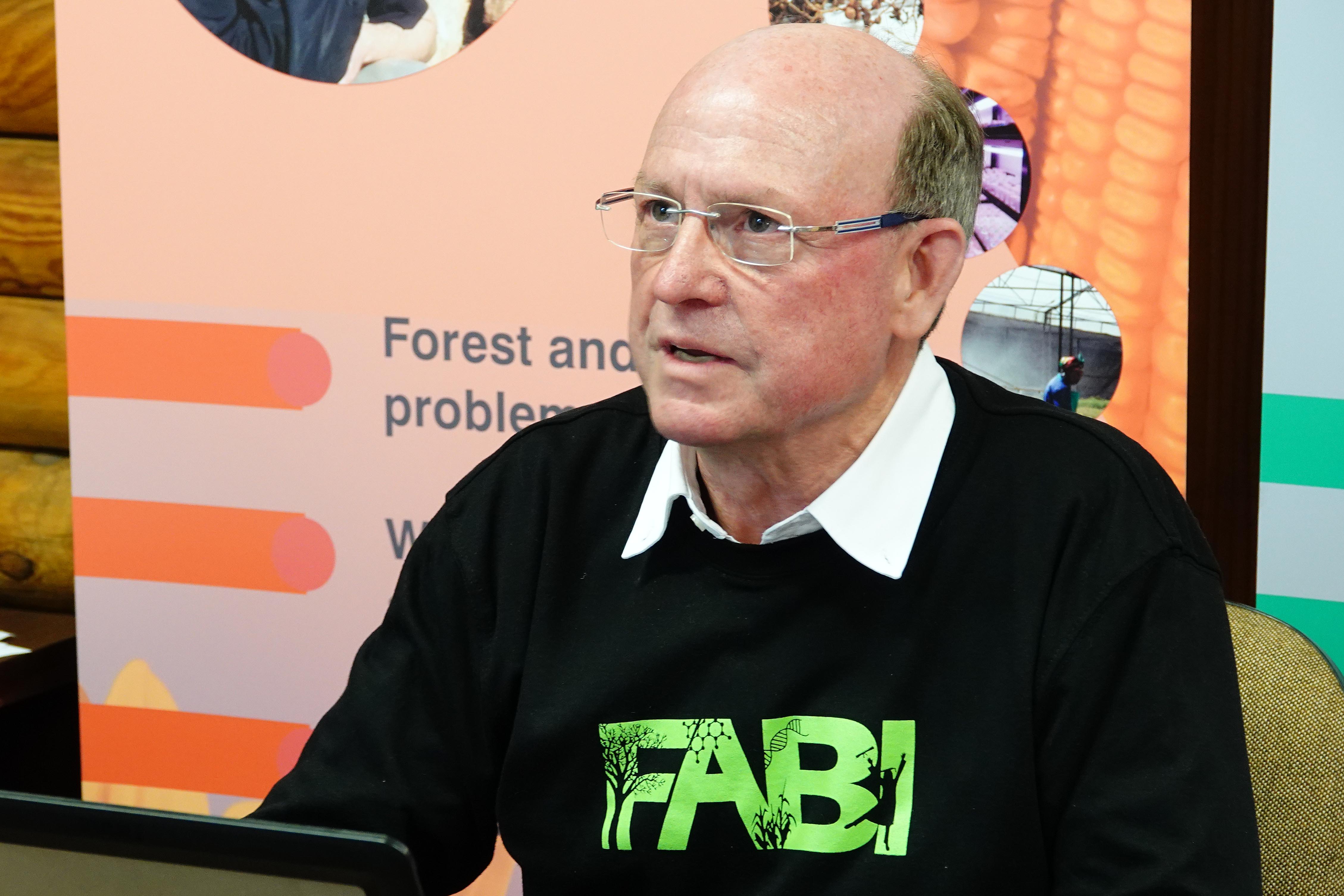The problem of invasive mycorrhizal fungi discussed in the July FABI International Seminar 2021-08-06
Dr Anne Pringle discussed the “Problem of invasive mycorrhizal fungi” as our guest speaker for the month of July FABI International Seminar Series on 29 July. As the the Vilas Distinguished Achievement Professor in the Departments of Botany and Bacteriology at the University of Wisconsin, Madison in the USA, is one of the world’s most highly accomplished mycologists and is well-known for her passion and commitment to science communication. In addition to her many accomplishments and awards, she also served as the President of the Mycological Society of America in 2020. Professor Mike Wingfield welcomed Anne and described her as a ’Master of the multidisciplinarity’ whose work demonstrates the power of intersections between many areas of research. He also made mention of the fact Anne will be spending her 2022 sabbatical in FABI, providing great opportunities to build new mycology collaborations in Africa.
In her seminar, Anne talked about Pinus spp. (pines) as important commercially grown species native to the northern hemisphere but widely planted commercially in the southern hemisphere. And in order to ensure their successful growth they require mycorrhizal fungi. She reminded the audience that to this end pine seedlings have been moved with soil to ensure that their mycorrhizal fungi were available to them. Consequently many exotic fungal genera have been introduced into new areas and in some cases these have escaped to invade natural woody ecosystems. Anne cited examples of such introductions that she has studied in various parts of the world. She discussed in particular, one of these, the highly toxic Death Cap mushroom Amanita phalloides, which was introduced into North America and switched hosts to a native California oak. Likewise, in Colombia, Amanita muscaria has established on a native Andean oak Quercus humboldtii. Anne highlighted the possible consequences of these invasions and called for scientists to collect “baseline” data documenting fungal biodiversity and the impacts of the movement of soils and fungi by humans over the last century. In this regard, she suggested that these introductions (some of which are continuing) may have irrevocably altered local habitats.




